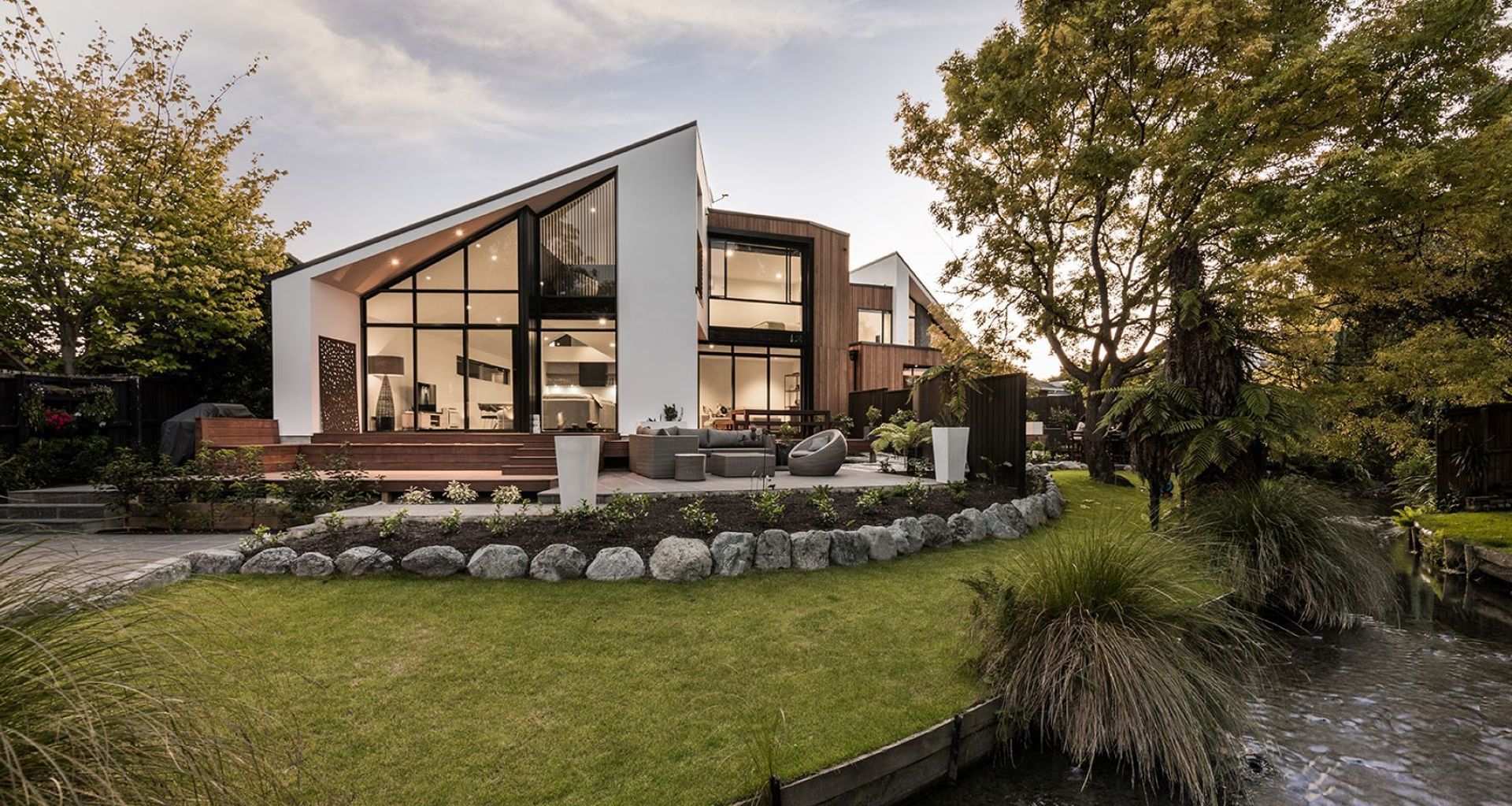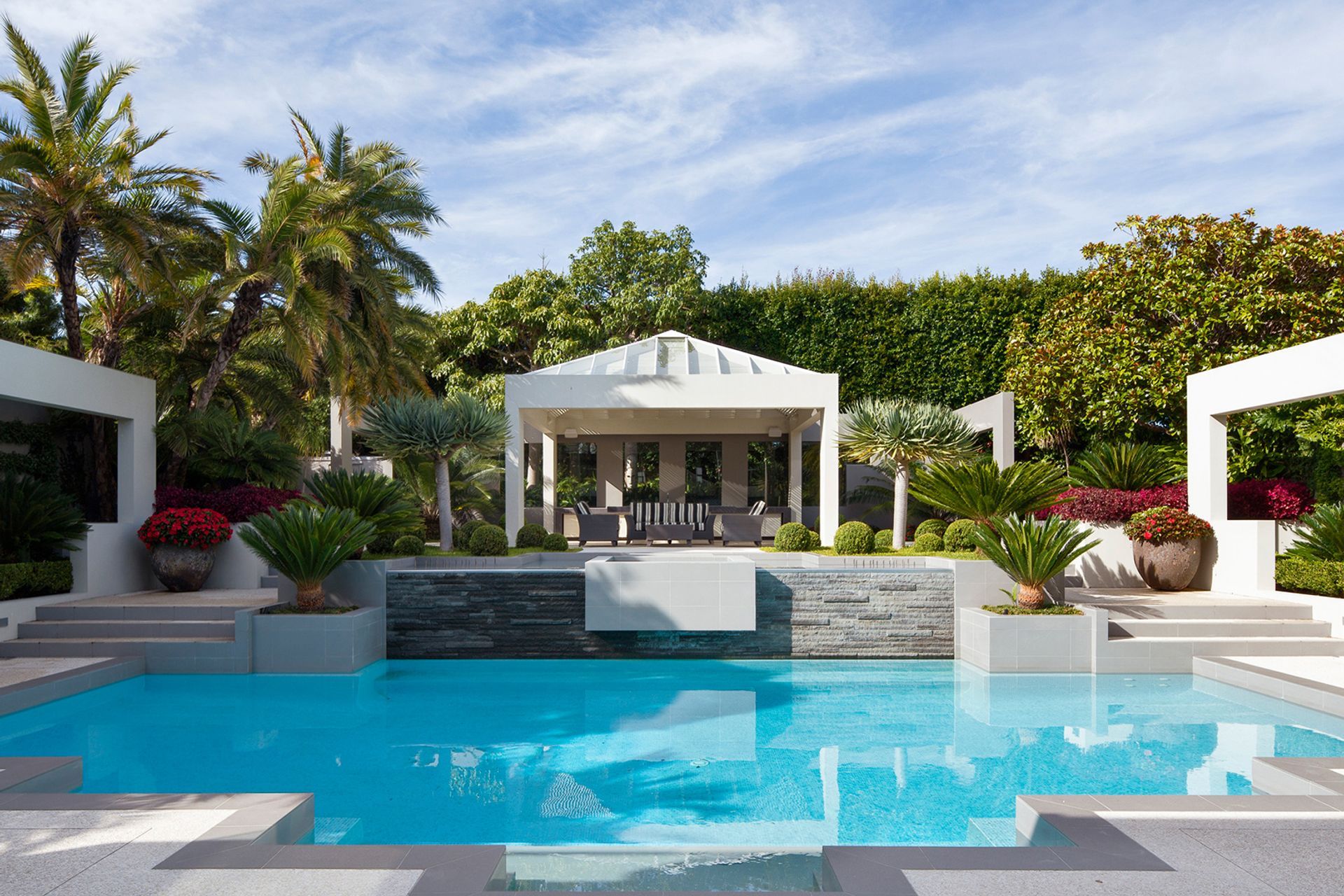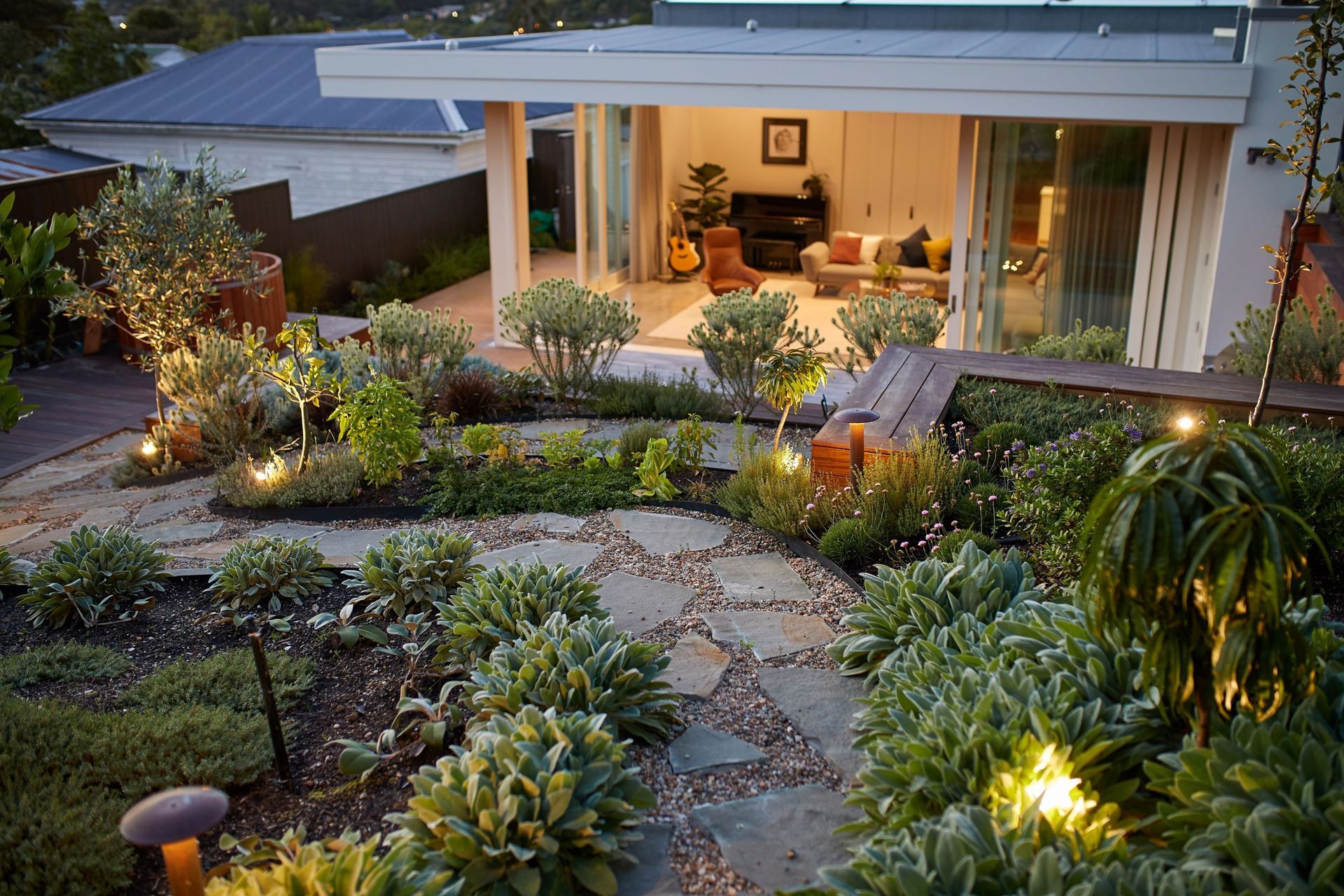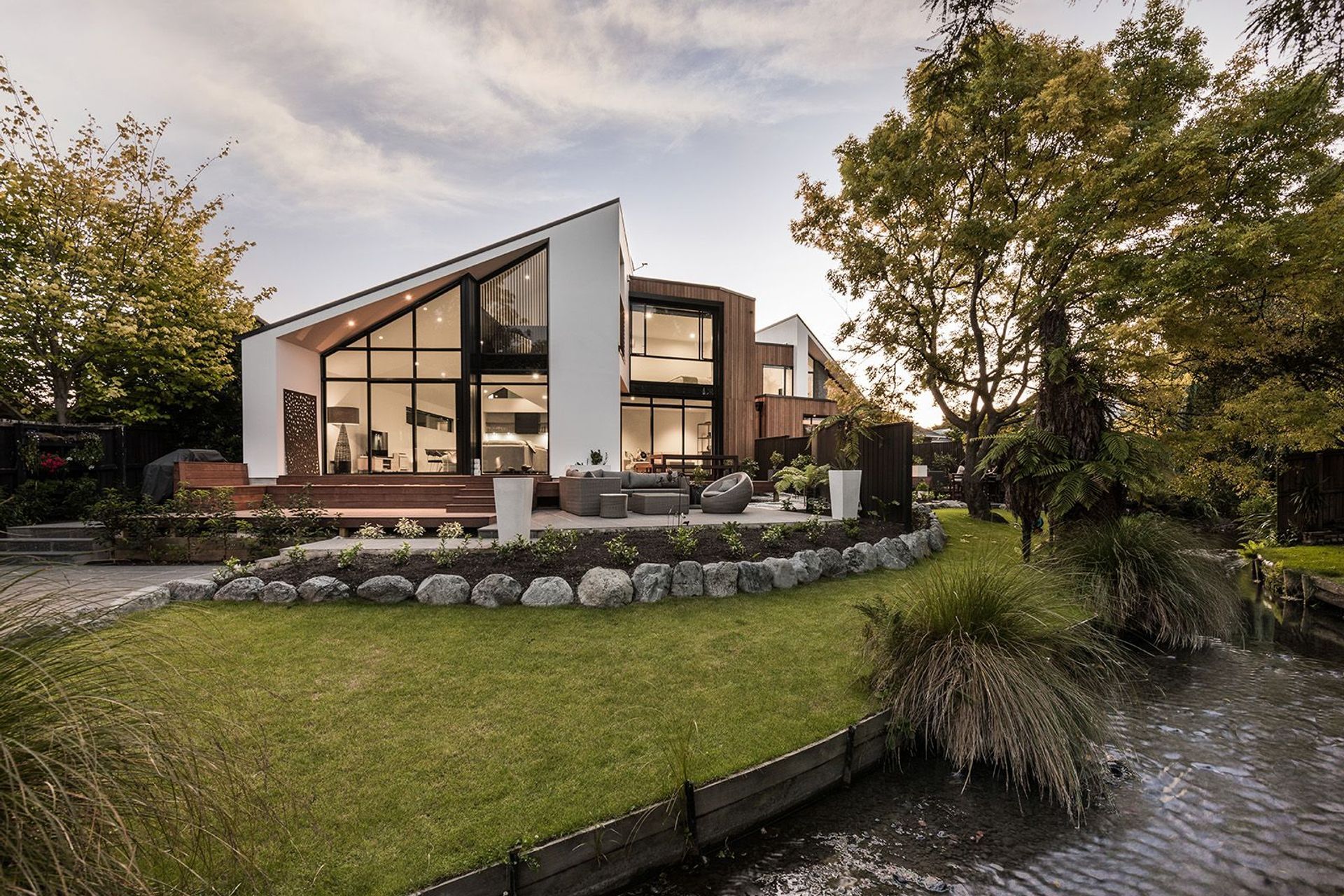What is hardscaping? Understanding the basics and beyond to improve your home
Written by
01 February 2024
•
10 min read

Hardscaping is an aspect of landscaping that often flies under the radar, hence the reason many outside the industry haven't even heard of it. However, once you understand what it means and what it encompasses, you'll realise that hardscaping is the backbone of our outdoor spaces and homes with the potential to completely transform them for the better.
Understanding hardscaping for outdoor living spaces
Hardscaping in landscaping is the integration of non-living elements in landscaping, such as paths, retaining walls and patios. It involves the use of hard materials like bricks, concrete, gravel, wood and stones to create structures and features that are functional and/or aesthetic. It can provide structure to outdoor living spaces, increase usability and accessibility, define and differentiate spaces, improve longevity and durability and be complementary to its natural surroundings.
A breakdown of common materials used in hardscaping
As just mentioned, there are many hard materials used in hardscaping including bricks, concrete, gravel, wood, stone and more. They all have their own qualities and characteristics and are used in a variety of different ways.
1. Bricks
Bricks offer a classic look for paths, patios, and edging plus are a strong option for structural features. They bring a warm aesthetic that works well in both traditional and contemporary landscape designs.
Related article: The art of brick selection — A definitive guide for Kiwi homes
2. Concrete
Concrete is widely used for its strength and flexibility and can be precast into pavers or poured on-site for patios, walkways, and retaining walls. They can also be quite decorative with coloured and stamped concrete options available.
3. Glass
Glass is occasionally used for decorative purposes like mosaic tiles for water features which can add both colour and texture that catches the eye.
4. Gravel and pebbles
Gravel and pebbles are an affordable option for paths, driveways, and drainage. Easy to install and use as part of a DIY project, they complement most types of landscape design.
5. Metal
Metals like steel, aluminium and wrought iron are widely used for garden edging, fences, gates and other outdoor structures. Corten steel, which weathers to a protective rust-like appearance, has become incredibly popular in recent times, prized for its aesthetic appeal and durability.
6. Stone
Local and imported stones are durable, versatile and pleasing to the eye. They are extensively used for paths, walls and decorative features. Common types include basalt, schist, limestone, and river stones.
7. Synthetics
For decks and some types of edging, synthetic or composite materials are chosen for their durability, low maintenance and affordability. They can also very closely mimic the look of natural alternatives like wood or stone.
8. Timber
Wood is the classic choice for decking, fences, pergolas, raised garden beds and more. There is a wide range of native and exotic options as well as treated woods like Pine.
Prime examples of hardscaping features
There are many different hardscaping features to consider for your next landscaping project which include those previously discussed like paths, patios and edging as well as a few others too.
1. Decks
Wood and composite decks are incredibly popular in New Zealand, providing an elevated outdoor living space that extends from your own home, into your backyard and garden space. They can also increase the value of your home significantly.
Related article: The best decking materials in New Zealand
2. Driveways
Every home needs a driveway and you'll have many choices to consider with concrete, asphalt, gravel, and paving the most common in this country. Not only do they provide safe and easy access to your property but they add to kerb appeal as well.
3. Fences and gates
Fences and gates are important for privacy, security, and for defining property boundaries. For landscaping gardens and backyards, they can frame the space nicely.
4. Fire pits and outdoor fireplaces
One of the more unique options, fire pits and outdoor fireplaces are great additions that offer warmth and a natural focal point to gather around on cool evenings.
Related article: Fire pit ideas that are redefining outdoor living in New Zealand
5. Outdoor kitchens and grills
To elevate an outdoor space even further, you can't look past an outdoor kitchen. The convenience and the ambience this brings to any social situation is priceless, offering you a genuine al fresco experience.
6. Pergolas and gazebos
Spaces of shade and shelter are vital during the hot Kiwi summer and pergolas and gazebos are great options for this. They can also be highly decorative and become part of the garden landscape when combined with climbing plants.
7. Patios
Patios are laid directly onto the ground with concrete, pavers, stone, or brick, providing a durable and flat surface for casual dining, lounging, and entertaining.
8. Retaining walls
Retaining walls are essential for managing sloped areas, preventing soil erosion, and creating terraced levels for planting. They can bring functionality to an otherwise unused space and can be constructed from stone, concrete blocks, timber, or poured concrete.
9. Walkways and paths
For large gardens in particular, walkways and paths help guide movement through a space in a structured yet visually pleasing way. A variety of materials can be used including concrete, flagstone, gravel, or brick.
10. Water features
A water feature is a unique and soothing element to consider, attracting wildlife and creating a feeling of serenity. They can exist in a variety of forms including fountains, ponds, streams and waterfalls.
The difference between hardscaping and softscaping
At the opposite end of hardscaping exists softscaping, which also needs to be acknowledged as the two are greatly intertwined. Softscaping represents the living and organic elements of landscape design. It typically involves the use of flowers, grass, shrubs, plants and trees in our outdoor living spaces bringing vibrancy and vitality. Softscaping is often seasonal, changing with and according to the natural environment contributing to the local ecosystem so that it can thrive and flourish.
Creating a harmonious landscape design demands a careful balance, where hardscape and softscape elements blend seamlessly. Hardscape elements typically provide structure and functionality, while softscape elements make landscapes look inviting and nature-friendly. By integrating both softscaping and hardscaping elements, like climbing plants on a pergola, you can achieve a cohesive and aesthetically pleasing scene. Ideally, hardscape features should be installed first, then beautified with softscape elements.
Tips for a successful hardscaping project
Hardscaping projects can be simple or complex, large and small. Irrespective of this, some handy tips that can put you on the path to success, saving you time, energy and money in the short and long term.
1. Think about your choices in a holistic way
Hardscape elements are vital structural components in landscape design that contribute to an organised outdoor space with minimal upkeep. Beyond their functional roles, these elements add character and personality to the area too. For this reason, they should be viewed for the potential they can offer on all fronts, not just the practical. For instance, a hardscape element like a retaining wall will stabilise a slope to prevent erosion but also create a usable flat space from which you can install another distinctive feature, like a water fountain, that reflects your tastes and passions.
2. Consider your material choices carefully
Hardscaping features will be exposed to elements that change seasonally throughout the year, which makes your choice of materials crucial. They will also be highly visible in an outdoor space so aesthetic traits can't be ignored. Understanding your local climate conditions and how a given material will hold up and for how long will give you a basis for comparison. Thinking about the colour and texture and how it complements your natural surroundings is important too for reasons relating to the latter.
3. Take note of your surroundings
Careful planning and preparation are required for designing and installing your hardscaping features and you need to look closely at your surroundings as part of the process. For example, to avoid weather damage to a gazebo, evaluating the placement of nearby trees and assessing the risk of falling branches (or worse) during storms would be a wise thing to do. Securing other potential loose objects would be another, or choosing another position for your feature altogether.
4. Plan and budget appropriately
Any hardscaping project’s initial steps should involve planning and budgeting. Prioritising essential elements, considering the overall cost, potential need for professionals, and long-term benefits of the investment can ensure a successful project. Design planning for the entire yard will help keep everything cohesive and prevent future project conflicts.
Leveraging existing landscape elements and discussing budget-friendly alternatives with professionals can provide significant savings without sacrificing hardscape quality. Adjusting the project scope based on actual costs and utilising tools, like material calculators, are crucial for staying within budget and avoiding unnecessary expenses.
5. Prioritise site preparation and installation
The success of your hardscaping project, especially a large project, may hinge upon proper site preparation and installation. This involves conducting a thorough site evaluation to assess whether the proposed hardscaping project is suitable for the site, considering factors like size, accessibility, gradient, soil properties and so on. For this, you'll want experienced and trusted professionals carrying out this work on your behalf to avoid any unwanted surprises after completion.
6. Work with trusted and experienced professionals
This continues from the previous point but is so important it warrants a point in itself. Engaging experienced hardscaping professionals can guarantee high-quality results and help sidestep common installation pitfalls. Professional guidance is particularly beneficial in designing and balancing hardscape with softscape in unique or challenging environments and climates.
Qualified professionals are crucial for extensive planning and construction, including necessary services like plumbing, electrical, and gas connections where outdoor kitchens are concerned. They bring a wider range of materials and expertise, which is particularly important for complex or extensive hardscaping projects. Many will tell you this is not an area to skimp or take risks on and they are one hundred percent right.
7. Be diligent with your maintenance and care
Maintaining your hardscaping features is just as crucial as its installation. Regular cleaning preserves the appearance, safety, and durability of hardscaping materials. Doing things like adding a protective seal and applying a fresh coat of stain or sealant at regular intervals can protect hardscape surfaces from the weather and prevent damage. Hardscaping features are, by their nature, hardwearing and low maintenance, but a little bit of care can go a long way to delivering an even better return on investment.
Hit the ground running with hardscaping for your home
As you can see, hardscaping offers a unique blend of functionality and aesthetics, transforming outdoor living spaces into functional and visually appealing havens. From choosing the right materials and balancing hardscape and softscape elements to enhancing kerb appeal and maintaining the structure, successful hardscaping involves thoughtful planning, careful installation, and regular maintenance. By leveraging the power of hardscaping, you can create a spectacular outdoor space with landscaping elements that not only serve your needs but also resonate with your personal style.
Related article: Landscape design tips and strategies to help you create your dream garden






